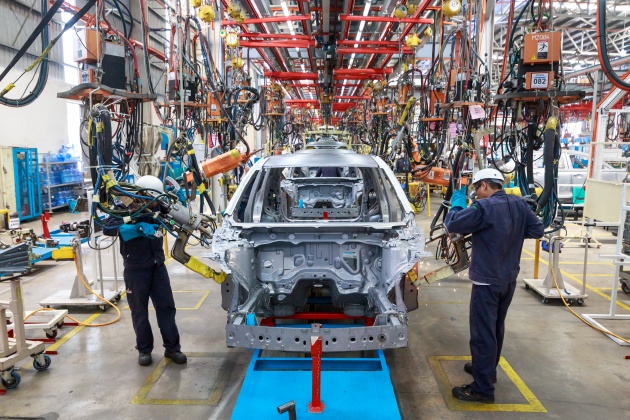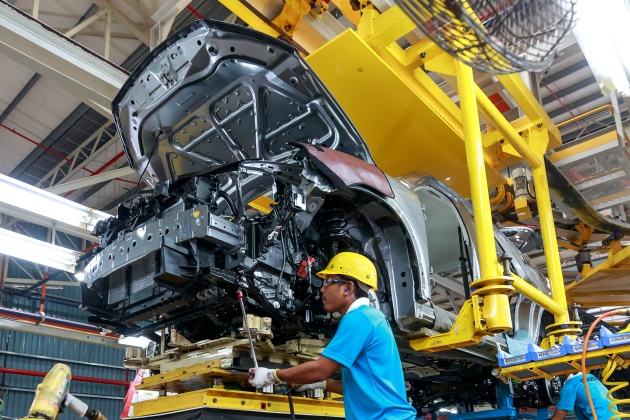Last December, a news report indicated the possibility that locally-assembled cars could cost more from this year as a result of a potential restructuring of automobile duty rates by the government.
This is now looking like a reality, if what is based on that determined in the new, publicly available Excise (Determination of Value of Locally Manufactured Goods for the Purpose of Levying Excise Duty) Regulations 2019, prepared by the ministry of finance and which was gazetted on December 31, 2019, is interpreted right.
Under the terms of the new regulations, which is now technically in force, completely-knocked-down (CKD) vehicles will be liable to pay more taxes. This is because the methodology of how the open market value (OMV) of a vehicle is calculated has been changed.
What is OMV? Well, it is the defined final market value of a CKD vehicle ex-factory, before the government imposes excise duties on it. An assortment of components determine the OMV, and these include the cost of the CKD pack, cost of manufacturing and components as well as assembly and administration charges.
This is different to that for a fully-imported CBU vehicle, which works on a price based on Cost, Insurance and Freight (CIF), to which import and excise duties are imposed. Excise duty is between 60% and 105% (regardless of CKD or CBU), calculated based on the car and its engine capacity, while import duty can reach up to 30%, depending on the vehicle’s country of manufacture. Vehicles from ASEAN countries are not imposed with import duty.
The gazette adds new components into the OMV calculation. Under the new regulations, the computed value to determine duties will now take into account not just the profit and general expenses incurred or accounted in the manufacture of a vehicle, but also of its sale.
According to a source familiar with the matter, the new way of calculating OMV, which introduces duties to the sale of the goods raises new questions and has caused confusion for OEMs and distributors.
Previously, the OMV only took into account costs for the manufacture of a said item, but the “and sale” clause also now applies to areas such as engineering, development work, art work, design work, plan and sketch, royalty payments and license fees (patent, trademark, copyright).
The clause 4.2 (d) widens the net considerably by including “any direct and indirect costs incurred or accounted in the manufacture and sale of the dutiable goods.” This, the source points out, is “frightening,” because the MoF/Customs did not engage the auto industry prior to the release of the gazette.
The inclusion of this “office cost” (versus only “factory cost” before this) could potentially widen the scope significantly as it will factor in the sales and marketing costs of a particular model at the distributor level. As excise duty (which rate remains unchanged) is levied on a car’s OMV, the base price’s increase will also cause chargeable excise duties – and the final car price – to rise accordingly.
The source said that the previous method of calculating value – ex-factory – is the more fair approach as that’s the convention. Levying a product should be just that, levying the product, he said. There’s also the question of double taxation, as car companies pay corporate income tax on their profits as well, as with all businesses.
Another point is that the CBU fully imported vehicles continue to be taxed the same way – on the vehicle itself and nothing extra – which brings some disparity. “This is unfair to those who have invested in CKD operations in the country,” he said.
Clearly, this move is to extract more revenue from the business of selling cars, but with this duty restructuring, the cost price of cars are set to increase, and it’s likely that car companies will pass it on to the consumer.
Asked on the possible quantum, the industry source said: “A rough figure would be CKD cars costing around 12-15% more with this new way of calculating OMV.”
Looking at the bigger picture from the immediate effect – which is extra revenue for the government coffers and possibly higher vehicle prices – there will be knock-on effects, aside from being unpopular with the public.
“Higher prices will translate to lower volume for car assemblers in Malaysia, which will in turn affect employment if they decide to scale down operations,” the source said.
“Should that happen, the government will collect less in corporate taxes, and Malaysia will lose out on investment to neighbouring countries. There will be no extra revenue for the government,” he said, casting doubt on the overall effectiveness of this move and branding it as a lose-lose scenario for consumers (higher prices) and carmakers (lower volume) as well.
All this would go against the grain of what the ministry of international trade and industry (MITI) had intimated last year, when it said that it was considering a reduction in excise duty for vehicles as a possible way for bringing car prices down. Deputy minister of international trade and industry Ong Kian Ming had said that while a reduction in excise duty would mean less direct revenue, it would be offset by total collection due to increase vehicle sales.
With all this, plus the added uncertainties of changing policies heading into the future (the NAP has been delayed multiple times), car companies in Malaysia looks to have a tough time planning ahead, especially those with CKD operations. How would they plan their investments if nothing is set in stone, and could or would change in an instant without sufficient notice?
Rumours are that a few brands are already considering to pull potential investments in upgrading their CKD plants if this is to go through. Going the CBU route sounds like a simpler process, but the reality is far from it, because approved permits for imports cannot exceed 10% of CKD total industry volume (TIV), as stated by an industry observer previously.
Observers have previously stated that the tax structure has come under review because local CKD manufacturers ‘have been known’ to under-declare the foreign content levels of the vehicles produced and ‘escape with huge profits’ as a result. Another industry observer has also noted that raising car prices will benefit local makes due to their lower price points, though it will also deter foreign direct investments into the industry.
Related Cars for Sale on
Source: Read Full Article














